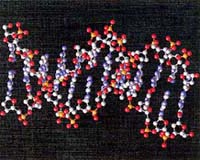| . |  |
. |
Washington (AFP) March 14, 2011 Abortions of female fetuses have led to a massive surplus of young unmarried men in India and China, raising fears of an outcast group that could threaten the social fabric, a study said Monday. The trend took root in the 1980s when ultrasound technologies made it easier for families to detect fetal sex early and to abort if it was not what the parents desired, said the analysis in the Canadian Medical Association Journal. Sons have traditionally been preferred over daughters in many parts of China, India and South Korea due to social, cultural and financial motivations. Sex-selective abortion is outlawed but can be difficult to enforce. The phenomenon was first spotted in South Korea in the early 1990s, when the sex ratio at birth (SRB) -- typically 105 male births to every 100 female births -- rose to 125 in some cities. Similar rises in male births were seen in China, "complicated by the one-child policy, which has undoubtedly contributed to the steady increase in the reported SRB from 106 in 1979, to 111 in 1990, 117 in 2001 and 121 in 2005," said the study. India has seen "sex ratios as high as 125 in Punjab, Delhi and Gujarat in the north but normal sex ratios of 105 in the southern and eastern states of Kerala and Andhra Pradesh," it added. In parts of China where a second child is allowed, after a daughter is the first born, the SRB for the second is 143, suggesting that many choose to abort a second girl fetus in favor of trying again for a boy. Estimates of China's actual population difference in 2005 pointed to 1.1 million excess males, with men under 20 exceeding the number of females by around 32 million, said the study led by Therese Hesketh, University College London Centre for International Health and Development. "These men will be unable to marry, in societies where marriage is regarded as virtually universal, and where social status and acceptance depend, in large part, on being married and creating a new family," said the authors. Referred to in China as "guang gun," meaning "bare branches," these men are presumed to be unable to bear fruit by coupling and raising a family. "In China and parts of India the sheer numbers of unmated men are a further cause for concern," said the study. "Because they may lack a stake in the existing social order, it is feared that they will become bound together in an outcast culture, turning to antisocial behavior and organized crime, thereby threatening societal stability and security." Other concerns include the possibility that the surge of unmarried men will boost the sex industry, which has already expanded in India and China over the past 10 years. However, "the part played by a high sex ratio in this expansion is impossible to isolate; there is no evidence that numbers of sex workers are greater in areas with high sex ratios," said the study. Ninety-four percent of unmarried people aged 28-49 in China are male, and 97 percent of them have not completed high school, it said. "Despite the grim outlook for the generation of males entering their reproductive years over the next two decades, there are encouraging signs," said the study. A crackdown on sex-selective abortion in South Korea has resulted in a more normalized male-to-female birth rate in recent years, and China and India are both down from their peak SRBs due in part to public awareness campaigns and relaxed one-child policies. But it will likely be several more decades before the sex ratios return to normal, the authors said. The article was co-authored by Zhu Wei Xing of Zhejiang Normal University in China.
Share This Article With Planet Earth
Related Links All About Human Beings and How We Got To Be Here
 Missing DNA Helps Make Us Human
Missing DNA Helps Make Us HumanLos Angeles CA (SPX) Mar 14, 2011 A new study demonstrates that specific traits that distinguish humans from their closest living relatives - chimpanzees, with whom we share 96 percent of our DNA - can be attributed to the loss of chunks of DNA that control when and where certain genes are turned on. The finding mirrors accumulating evidence from other species that changes to regulatory regions of DNA - rather than to the ... read more |
|
| The content herein, unless otherwise known to be public domain, are Copyright 1995-2010 - SpaceDaily. AFP and UPI Wire Stories are copyright Agence France-Presse and United Press International. ESA Portal Reports are copyright European Space Agency. All NASA sourced material is public domain. Additional copyrights may apply in whole or part to other bona fide parties. Advertising does not imply endorsement,agreement or approval of any opinions, statements or information provided by SpaceDaily on any Web page published or hosted by SpaceDaily. Privacy Statement |